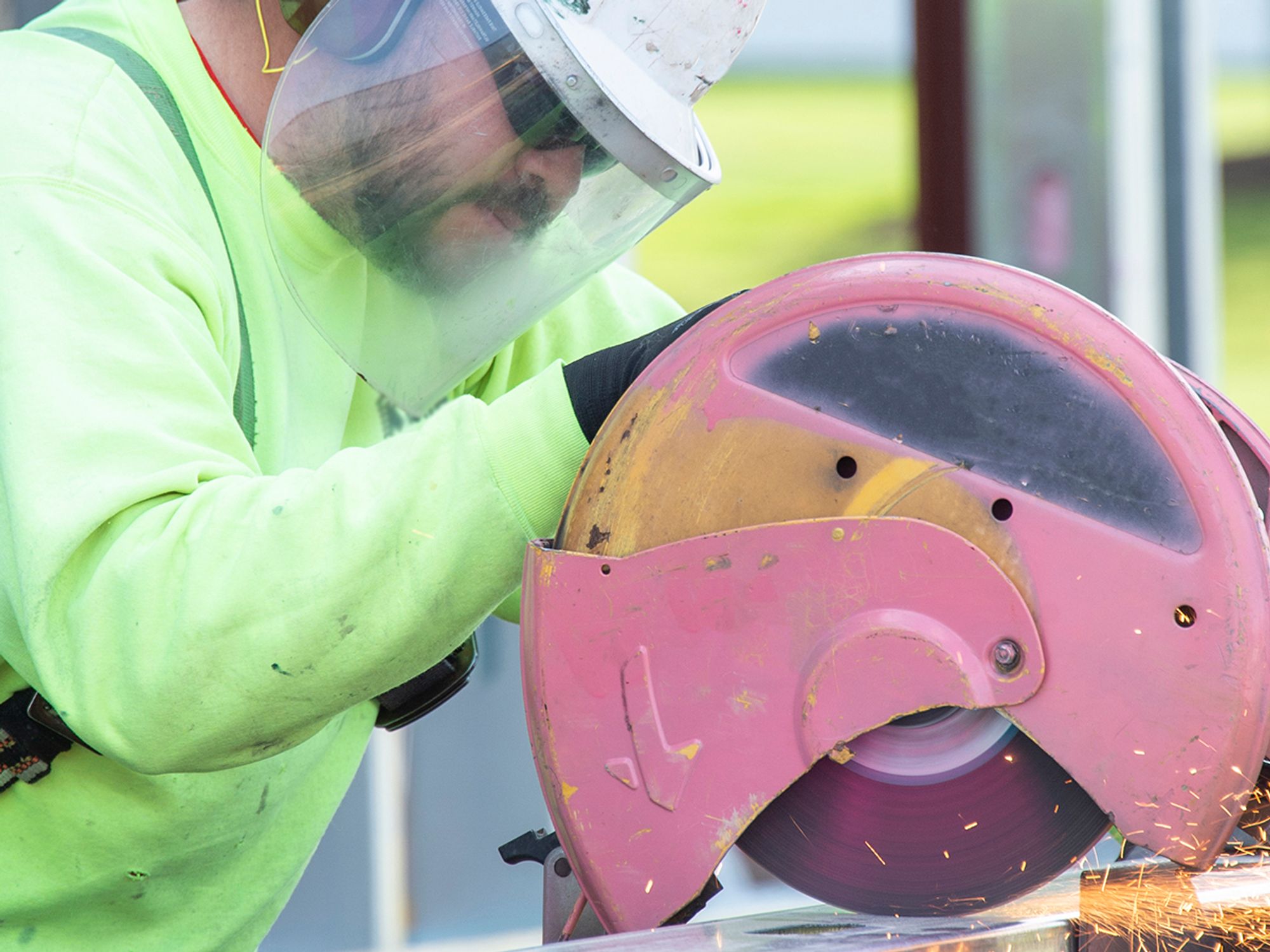Guards

- Guards must be used to protect the worker from moving parts, such as belts, gears, shafts, pulleys, and other moving parts of a tool.
Workers must safeguard the exposed moving parts of power tools. Belts, gears, shafts, pulleys, sprockets, spindles, drums, flywheels, chains, or other reciprocating, rotating, or moving parts of equipment must be guarded.
Machine guards, as appropriate, must be provided to protect the operator and others from the following:
- Point of operation.
- In-running nip points.
- Rotating parts.
- Flying chips and sparks.
Safety guards must never be removed when a tool is being used. Portable circular saws having a blade greater than two inches in diameter must be equipped at all times with guards. An upper guard must cover the entire blade of the saw. A retractable lower guard must cover the teeth of the saw, except where it makes contact with the work material. The lower guard must automatically return to the covering position when the tool is withdrawn from the work material.
